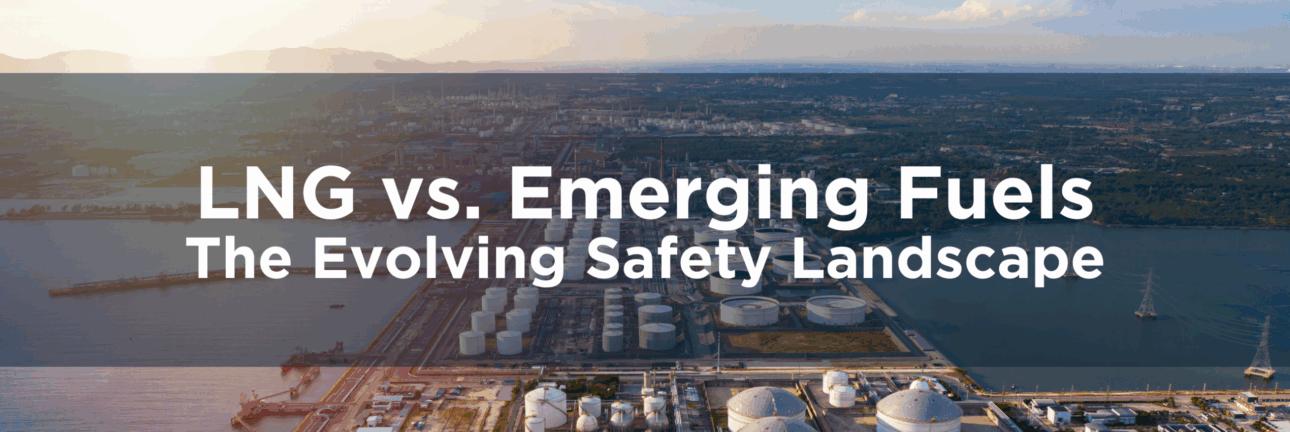LNG vs. Emerging Fuels – The Evolving Safety Landscape

As industries embrace alternative fuels such as ammonia and hydrogen, safety protocols must evolve in parallel. While LNG is mature in process safety, emerging fuels introduce new risks and operational challenges.
In this post, Steve Calabrese, who manages our Maritime Services, and Aaron Harris, who leads our Hydrogen Services team explore how these fuels compare and what companies must prepare for during the energy transition.
Comparing Process Safety: LNG, Ammonia, and Hydrogen
Q: What are the key process safety differences between LNG bunkering and emerging fuels like ammonia or hydrogen?
A: LNG has been the benchmark for cryogenic fuel transfer for decades. Many of the foundational safety protocols—such as emergency shutdown systems, exclusion zones, and spill management—translate to other alternative fuels. However, the hazard profiles of ammonia and hydrogen are fundamentally different from LNG, and this drives distinct process safety considerations.
For LNG, the dominant hazards are cryogenic exposure and flammability. Releases create cold vapor clouds that can ignite within a narrow flammability range, but LNG itself is non-toxic and disperses relatively predictably when modeled. The process safety framework—established under 33 CFR Part 127, NFPA 59A, and IMO’s IGF Code—is therefore built around containment, ignition prevention, and rapid isolation of the transfer system.
By contrast, ammonia introduces a toxic and corrosive hazard profile. While less flammable than LNG, ammonia releases can create immediate threats to human health through inhalation, and corrosive effects complicate both transfer systems and emergency response. Process safety controls must therefore emphasize robust leak detection, ventilation, and personal protective equipment for responders. Emergency planning also shifts from fire/explosion risk to life safety and environmental toxicity considerations. This often requires coordination with state-level environmental agencies in addition to federal maritime regulators.
Hydrogen presents yet another set of challenges. Its very small molecular size makes it prone to leakage and embrittlement of metals. Additionally, its flammability range is much wider than LNG. Even small releases can ignite with minimal energy, and flames are nearly invisible in daylight. Cryogenic hazards of liquid hydrogen systems also include the formation of oxygen on exposed piping and vent systems due to the extremely low temperature of liquid hydrogen, which is a concern that exists for LNG systems as well, but is more prominent in LH2 systems. Therefore, Process safety controls for hydrogen therefore require advanced leak detection, material selection to resist embrittlement, and unique firefighting strategies. Unlike LNG, where exclusion zones are based on dispersion and pool fire modeling, hydrogen exclusion zones may need to account for rapid ignition potential and vertical plume behavior.
The common thread is that while LNG bunkering has given us a mature regulatory and process safety framework, the emerging fuels demand new hazard identification and response strategies tailored to their unique properties. In practice, this means that operators cannot simply “cut and paste” LNG safety systems onto ammonia or hydrogen—each fuel requires rethinking risk assessments, emergency procedures, and regulatory engagement from the ground up.
Closing Thoughts
Understanding the differences between LNG and new fuel pathways is critical to anticipating tomorrow’s safety landscape. At AcuTech, we’re already preparing clients to navigate the complexities of this evolving environment.
At the Americas LNG Summit & Exhibition, Steve will share how our team is helping clients prepare for these shifts.
